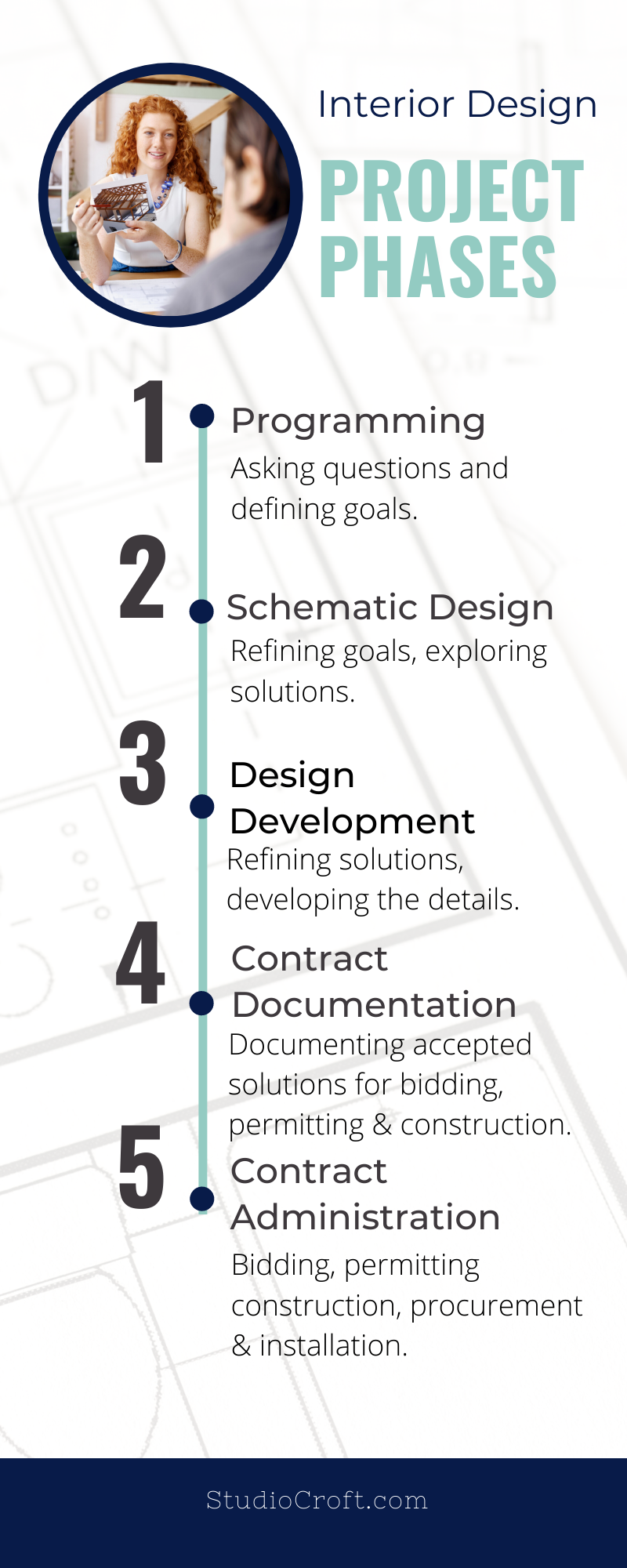
If you aren’t familiar with the design and construction industry, you may not know that there is a standard way of proceeding from from a great idea to a finished product. In other words, from project conception to project completion. It is commonly called the “Phases of Design”. At Studio Croft, we use these phases as a framework to systematically address each of our projects from beginning to end.
This post will give a brief overview of the five phases of design that we use on our projects, including some of the main tasks associated with each phase. Here we are focusing on more in-depth projects requiring alterations to the home or building. Phases of a less involved project, such as a room refresh or furniture design project will be covered in a later post. Didn’t realize that an interior designer could do that much for you? Read our post called The New Definition of Interior Design.
Along with defining the phases of design, we are excited to share examples of how we applied these phases to the Leo Horton project. This whole house renovation is one of our recently completed Studio Croft Modern Homes residential projects, started in the Spring of 2019 and completed in March of 2020.

The five most common used interior design phases that we implement at Studio Croft are:
For residential projects, like single family homes, these five most commonly used phases of interior design are typically a good break down of how and when design related tasks will be accomplished. On larger residential projects and commercial projects, additional phases are often added to address the complexities of design and construction. These additional phases can occur either at the beginning of the project, such as with “Pre Design”, in the middle when “Permitting” or “Bidding” is broken out separate from the CA phase, or at the end of the construction should a “Post Construction" phase be required based on client or project needs.
Each phase should have a specified start and and end. All of this kicks off after a client signs the contract. Depending on a project’s contracted fee structure, payment could be tied to milestones based on the completion of each project phase.
Every project will have something that comes up unexpectedly, but the key to keeping a project running as smoothly as possible is to have processes and procedures in place. Processes and procedures, like following the step-by-step order of the phases of design, keep projects moving forward in an efficient manner and keep all parties feeling informed about what is coming next.

This phase is all about asking questions and defining goals. We want to understand as much information as possible up front about your vision and your desired outcome. We explore how a space functions (or doesn’t function), how it needs to function in the future, who will use the space and how their needs impact the design. We spend time discussing a client’s needs, wants and desired outcomes.
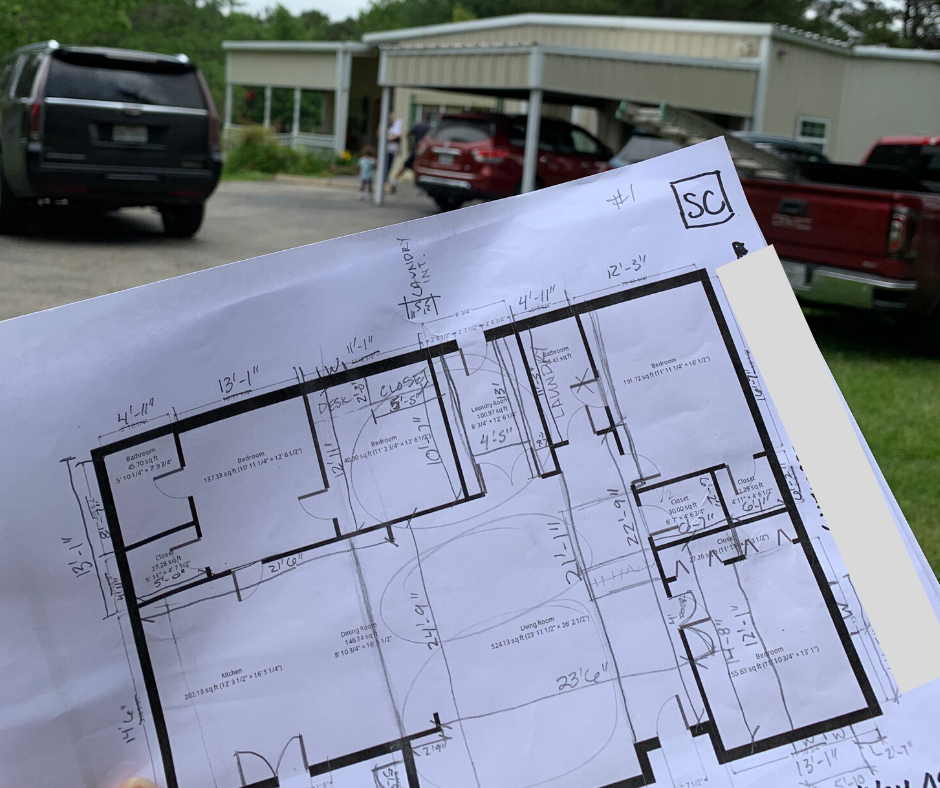

Programming includes the following tasks:

In the Schematic Design phase, information gathered during the programming phase is applied to initial design concepts, layouts, and product or material solutions. There is continued dialogue between the client and designer in order to refine the project goals and narrow the path to appropriate solutions.
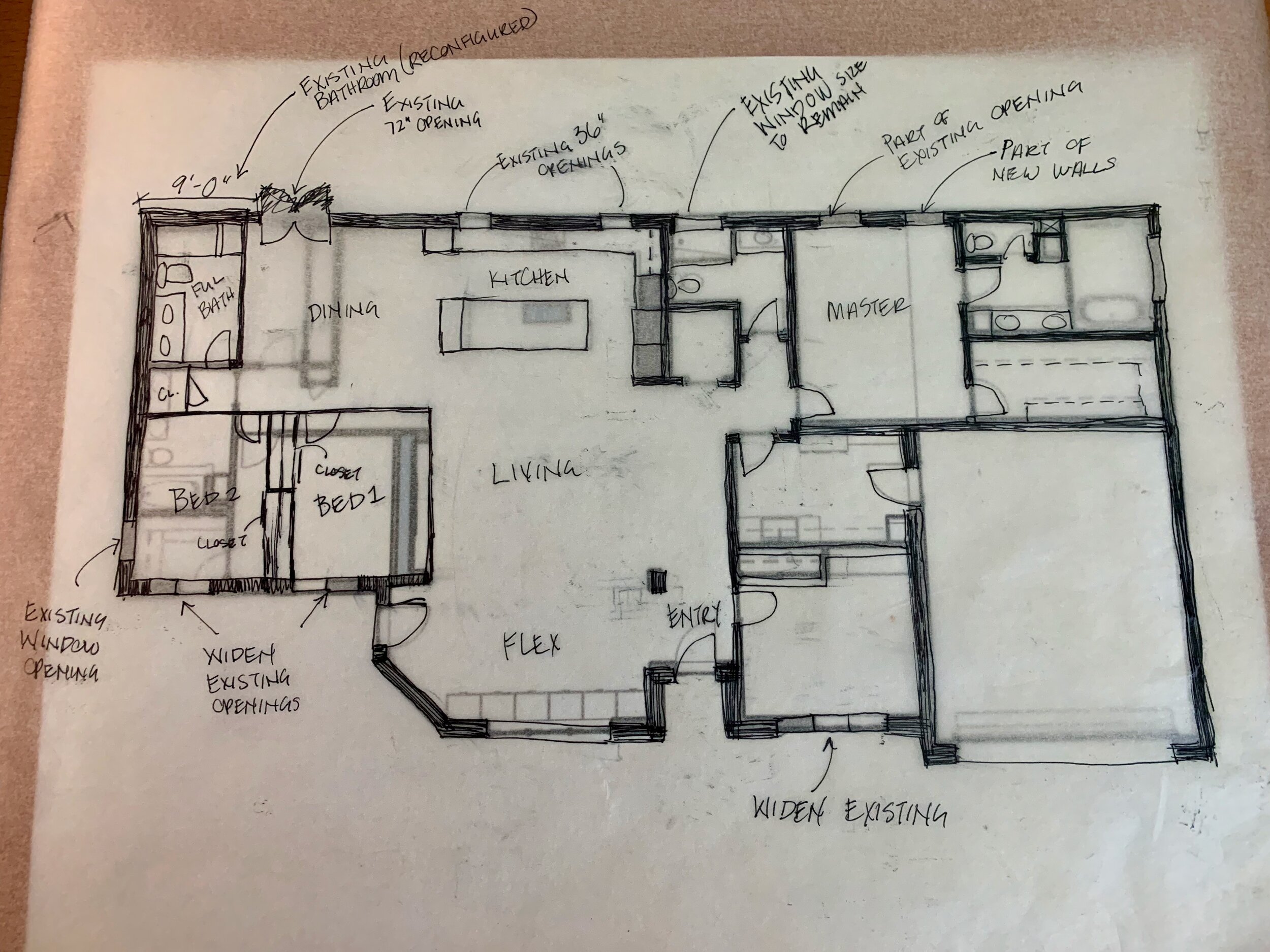
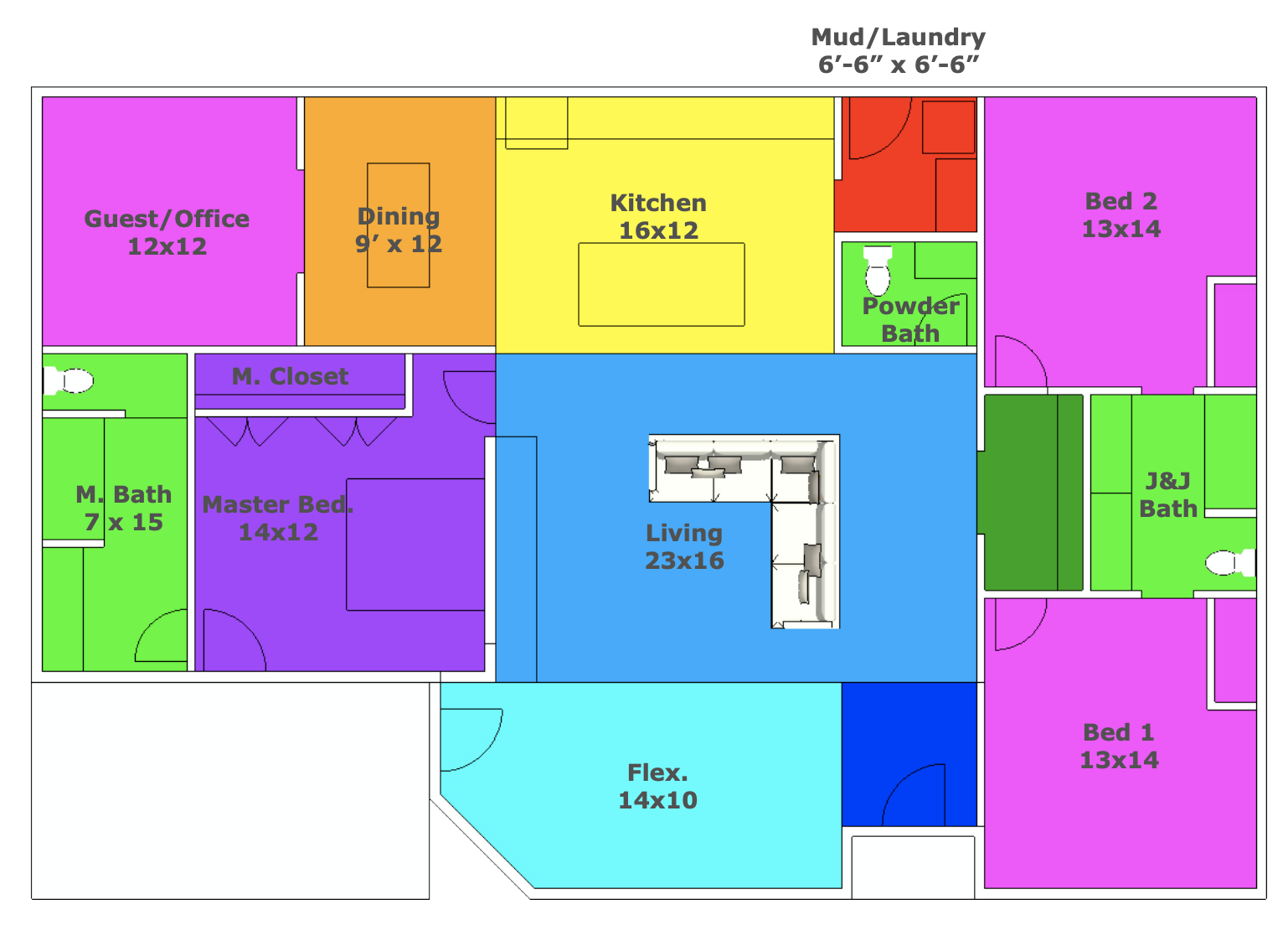
Schematic Design involves the following tasks:
Design Development is the phase in which a single path forward has been identified, but all of the details still remain to be worked out. It is a time of refining solutions and gathering more information on items specific to the design. Dimensions are still in flux as exact items are being reviewed and recommended by the designer to the client. For example, a kitchen layout will include space for a refrigerator, but the exact model of refrigerator is still being determined and dimensions are being adjusted to fit exact appliance as that information becomes known.
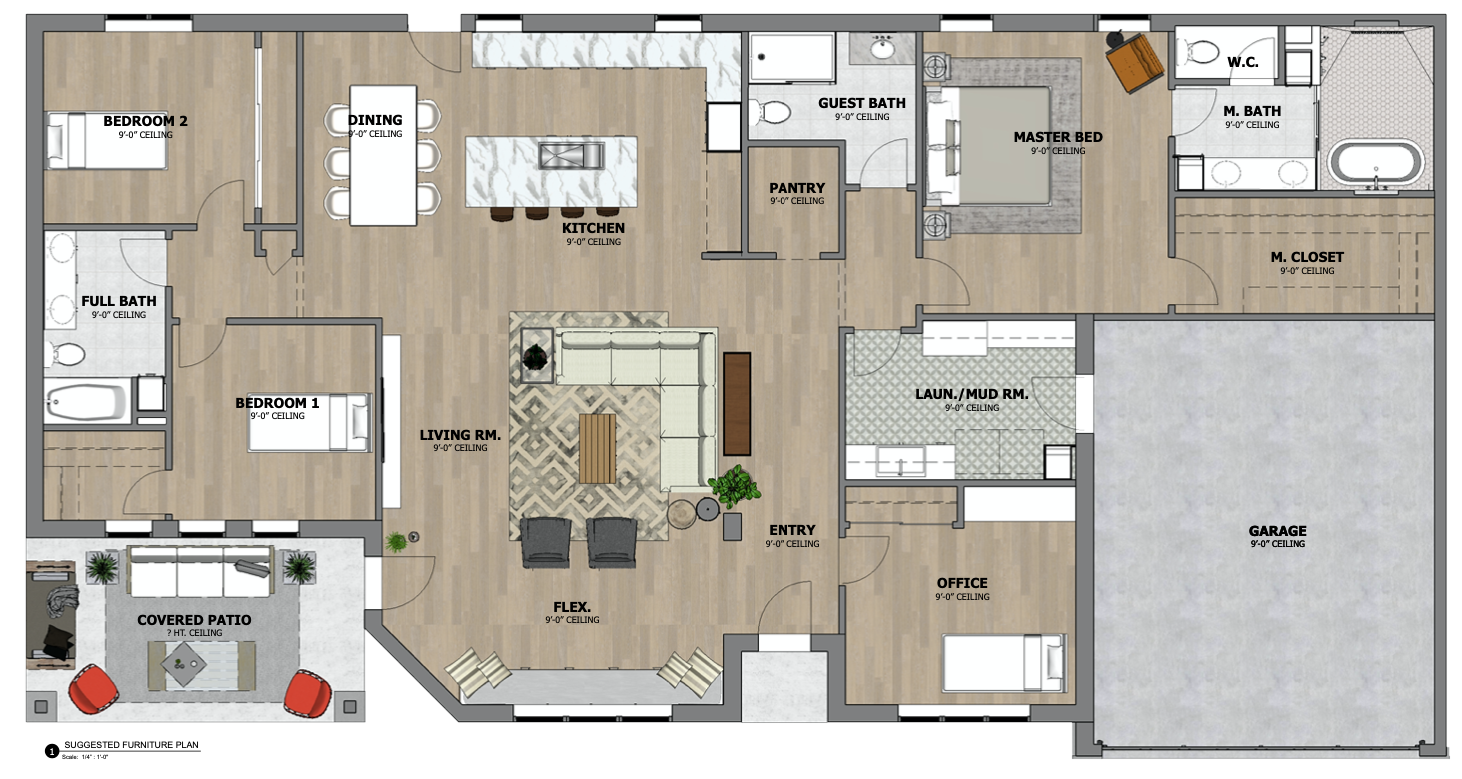

Design Development involves the following tasks:
By this phase, many decisions have been made and many options explored. This is the time to nail down loose ends and answer as many questions that can be predicted as possible. This is a time of detailed notation on your project. Communicating in words, 2D and 3D plans and images as much information as is necessary for the project to be constructed.
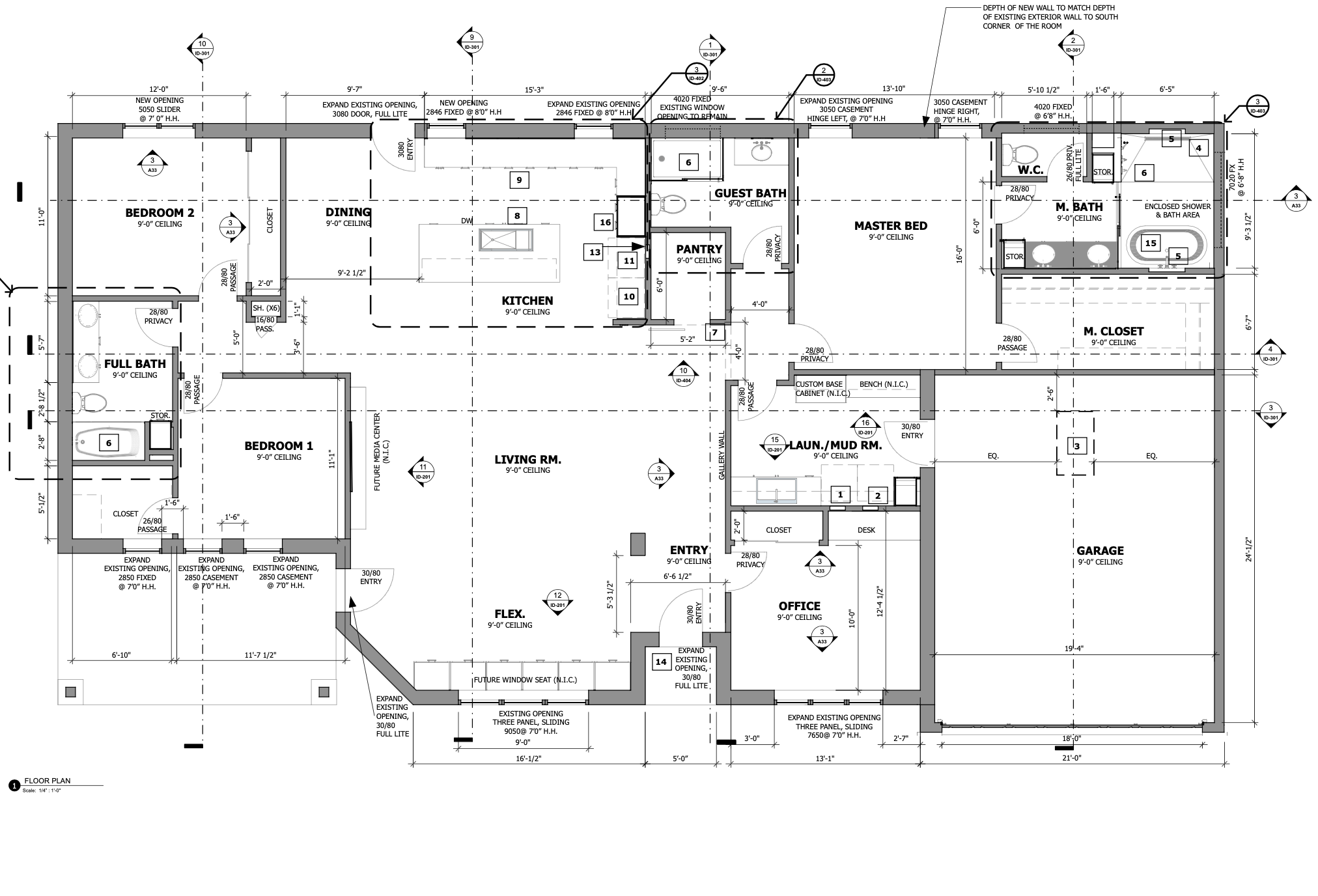
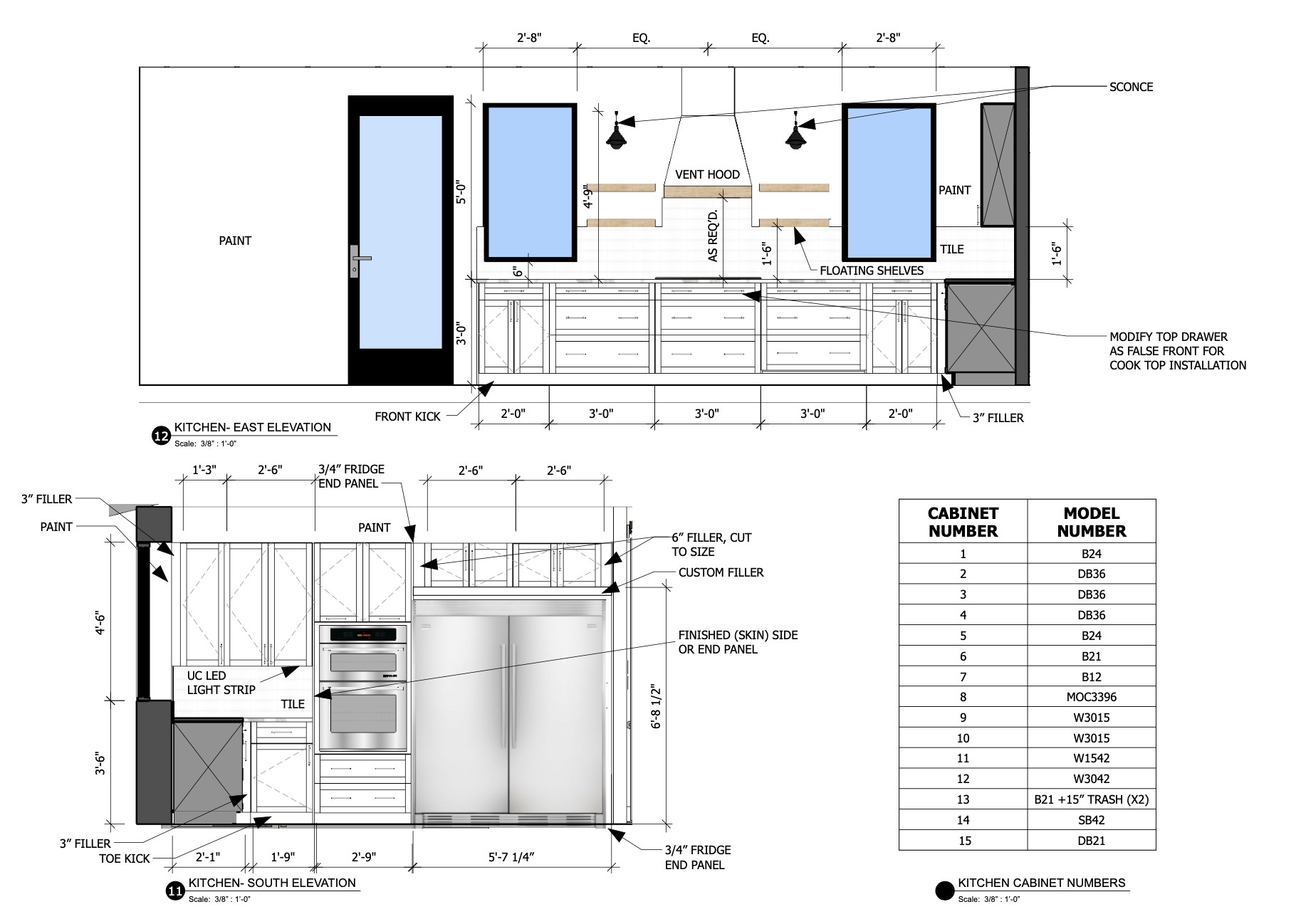
Contract Documentation involves the following tasks:

This is the phase where all the dust flies and the project really comes to life! Contractors give bids and are hired. Permits are secured if necessary. Items such as light fixtures, plumbing fixtures and furniture are ordered, shipped, received and installed.